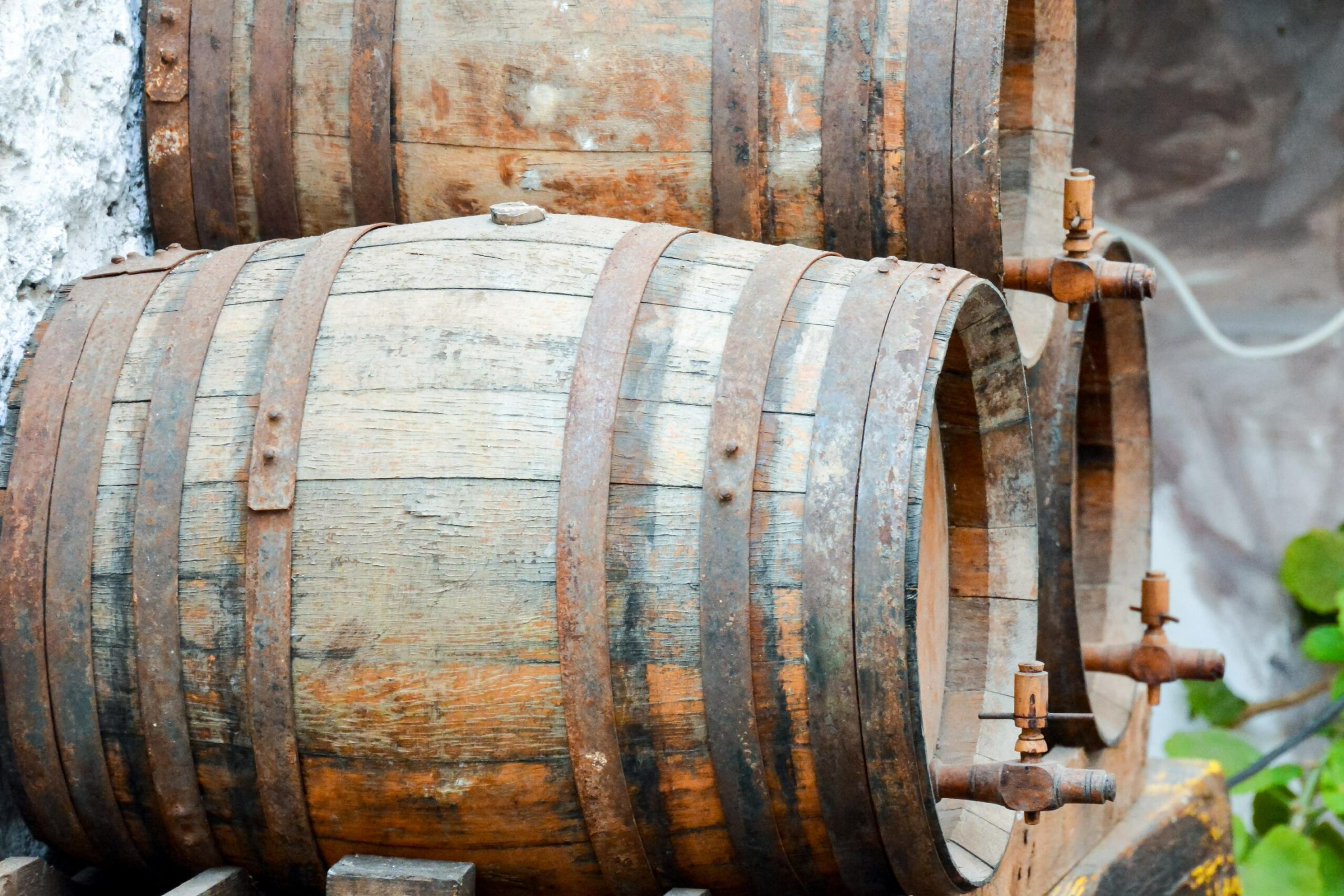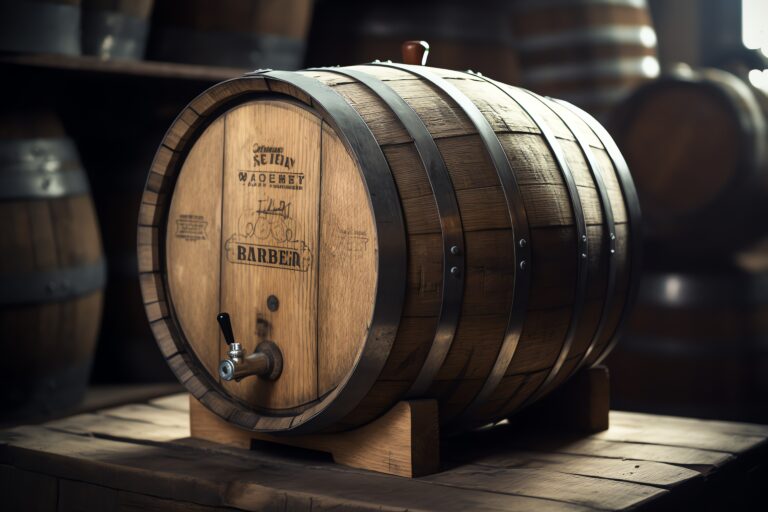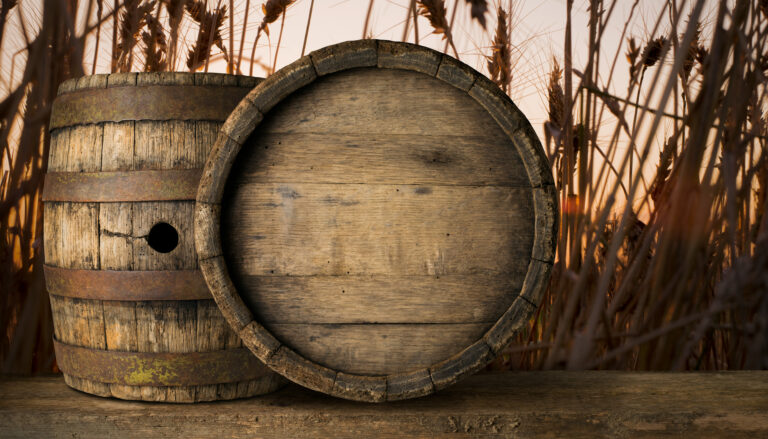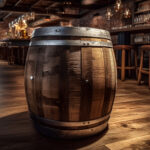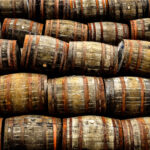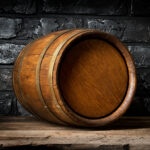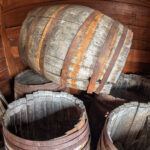You know that feeling, right? Settling in with your favorite whiskey, whether it’s the rich caramel notes of a good bourbon, the smoky intrigue of a scotch, or the nuanced character of a single malt. That amber magic in your glass? It owes a huge part of its soul to time spent inside toasted oak barrels. It’s not just storage; it’s a fascinating dance of tradition and innovation. Today’s distillers are like flavor alchemists, playing with different wood types, char levels, and even the very air the barrels breathe to craft truly unique and complex flavors. So, grab a dram and join us as we delve into the exciting trends shaping the future of whiskey barrel aging – get ready for some delicious discoveries that will redefine your next pour. The spirits world is buzzing, and your palate is definitely invited on this adventure!
The Story Behind the Barrel: Whiskey’s Aging History
The practice of barrel aging whiskey isn’t some modern fad; it’s a tale as old as the spirit itself. Centuries ago, necessity was the mother of invention. Distillers needed vessels to move and keep their whiskey. What they stumbled upon was a happy accident: those humble charred oak barrels were actually making the spirit taste and look better.
The Early Days of Aging
Back in the early days of whiskey production, resourcefulness was key. Distillers would use whatever barrels were available – maybe an old sherry cask or a retired port cask. But they soon noticed something special happened when whiskey aged in fresh, new charred oak barrels. That charring process is like toasting marshmallows – it brings out the wood’s natural sugars, giving whiskey aged in new charred oak those signature hints of vanilla and sweet caramel.
The Bourbon Boom and Oak’s Reign
The 19th century saw bourbon rise to prominence, and with it, the new charred oak barrel became a cornerstone of whiskey making. In fact, U.S. law dictates that bourbon must be aged in these virgin charred oak containers. This bourbon boom fueled the growth of cooperages, the folks who craft whiskey barrels on a grand scale.
What’s Next for Aging?
While new charred oak will likely always be a key player, especially for bourbon and many other whiskeys, some adventurous distillers are shaking things up with alternative barrels and creative barrel finishes to unlock entirely new flavor dimensions. Imagine a whiskey aged in a barrel that once held rich port, spicy rum, or even earthy tequila! Then there’s the art of finishing whiskey in barrels that previously cradled unexpected delights like maple syrup, robust stout beer, or even tangy salsa. As the craft whiskey scene continues its vibrant growth, expect even more imaginative approaches to barrel aging. The future of whiskey promises a thrilling blend of time-honored methods and bold innovation, all in pursuit of exciting new tastes.
Today’s Barrel Landscape: Popular Choices for Aging
As the world of whiskey barrel aging keeps evolving, get ready to see even more interesting barrel types and clever finishing techniques designed to create truly unique flavor experiences. Here’s a peek at some of the popular barrels you’ll find now and what might become more common down the road:
The Classics: Traditional Oak Barrels
The reliable workhorse of whiskey aging. Oak barrels, typically made from American white oak or European oak, are known for imparting those comforting vanilla and caramel notes we love. Remember, bourbon has to be aged in new charred oak barrels by law. We can bet that oak will remain the go-to choice for aging most whiskeys.
Venturing Out: Alternative Wood Barrels
Some daring distillers are experimenting with other wood varieties like hickory, maple, and chestnut. These can introduce fascinating flavors like smoky depth, nutty sweetness, or a hint of spice. While still less common, alternative wood barrels could gain popularity as distillers strive for those truly one-of-a-kind taste profiles.
Borrowed Flavors: Wine, Sherry, and Rum Barrels
Imagine aging whiskey in barrels that once held luscious wines, rich sherries, or tropical rum! This “second use” introduces flavors from the previous liquid, and the results can be spectacular. For instance, a bourbon finished in rum casks might pick up delightful tropical fruit notes. Expect more distillers to embrace this innovative “finishing” technique.
Small but Mighty: Small Batch Barrels
Smaller barrels mean the whiskey has more contact with the wood, leading to faster aging and more intense wood-derived flavors. Many craft distilleries favor small barrels, with aging periods sometimes as short as 6 to 24 months. Small batch aging in a variety of wood types could become a popular way to achieve bold and unique flavor concentrations.
The future of whiskey barrel aging is looking bright, with distillers constantly pushing boundaries in their quest to create amazing new taste experiences for us. So, next time you pour a dram, take a moment to appreciate the ingenuity that went into its creation!
The Wood Makes the Magic: Experimenting With Different Types
Beyond the traditional oak barrel, distillers are venturing into a world of different wood varieties to age their whiskey. Each wood type brings its own unique flavor signature to the spirit.
Hickory wood barrels can infuse bourbon with a smoky and subtly nutty character. The density of the wood also means a slower interaction, leading to a more nuanced flavor integration.
Maple wood barrels, often crafted from sugar maple, can lend bourbon delightful hints of caramel and maple syrup. This natural sweetness complements the classic vanilla and spice notes beautifully.
Chestnut barrels can impart bourbon with intriguing nutty and chocolatey undertones, along with a touch of pleasant bitterness from the wood’s tannins. Historically used in whiskey making, the resurgence of chestnut barrels is bringing back classic flavor profiles.
But innovation doesn’t stop at wood types. Distillers are also playing with different barrel sizes, from small quarter casks to massive hogshead barrels. They’re using barrels that previously aged other spirits like rum, brandy, or port, and even exploring aging whiskey in barrels under water for a unique, ocean-influenced flavor.
The sheer variety of woods and aging techniques being explored today signals an exciting future for whiskey connoisseurs. Get ready for new flavors on the horizon, with distillers crafting whiskeys tailored to a wider range of individual preferences. While the traditional oak barrel will always hold a special place, its dominance in aging whiskey might just be challenged as new woods rise to the occasion. The next generation of barrel-aged whiskeys is sure to hold some delicious surprises.
The Art of the Finish: Adding Layers With Alternative Barrels
Whiskey makers are getting creative by finishing their spirits in casks that once held other alcoholic beverages like wine, sherry, rum, or port. These alternative barrels impart distinct flavors and aromas to the whiskey, adding a final flourish to the aging process.
Wine barrels, particularly those that previously held red wine, can contribute fruity notes like cherry and blackberry. Whiskeys finished in wine barrels often have a pronounced fruit-forward character.
Sherry casks are known for imparting flavors of dried fruit, nuts, and warm spices. Whiskeys aged in sherry barrels frequently exhibit notes of raisin, prune, almond, and clove.
Rum barrels bring tropical flavors of banana, coconut, and molasses to the spirit. Rum barrel finished whiskeys tend to have a sweeter profile.
Port barrels contribute flavors of ripe berry, plum, and rich chocolate. Port finished whiskeys are often quite fruity and decadent.
Beyond these, distillers are even experimenting with barrels that once held beer, maple syrup, hot sauce, and even honey to craft truly unique and unexpected flavor profiles. As the demand for craft and artisanal whiskeys continues to grow, you can expect to see even more innovative barrel finishing techniques.
While traditional barrel aging will always be a fundamental part of whiskey making, alternative barrel finishing allows distillers to create exciting new flavors and offer more variety for whiskey drinkers. The future of whiskey barrel aging is bright and full of potential, with many new styles and flavors yet to be discovered. The next time you savor a dram of whiskey, it might just have a surprising twist thanks to an experimental barrel finish.
Speeding Up the Clock: Using Smaller Barrels for Faster Aging
Smaller barrels mean a greater surface area of wood in contact with the whiskey, which can accelerate the aging process. Many distillers are exploring the use of smaller barrels to bring their spirits to maturity more quickly.
The Power of 5 to 15-Gallon Barrels
Instead of the standard 53-gallon barrels, some distillers are aging whiskey in much smaller 5- to 15-gallon barrels. This increased surface area to volume ratio allows the whiskey to interact more intensely with the wood, absorbing its flavor and color compounds at a faster rate. Whiskey can potentially mature in just 6 to 24 months in these smaller vessels, compared to the years or even decades required in standard barrels. However, there’s a delicate balance – the whiskey can also extract too much oak flavor if left in small barrels for an extended period.
The Hybrid Approach: Combining Barrel Sizes
To harness the benefits of both fast aging and balanced maturation, some distillers are using a hybrid barrel aging approach. They might start the whiskey in small barrels for rapid initial aging, then transfer it to standard-sized barrels for a slower, more gradual mellowing. The small barrels quickly impart those initial oak and vanilla notes, while the larger barrels allow the flavors to integrate and soften over time. This method aims to achieve both speedy flavor development and a well-rounded final product.
Beyond Oak: Exploring Non-Oak Alternatives
A few adventurous distillers are even experimenting with non-oak barrel alternatives to create entirely new flavor experiences. Whiskey aged in hickory or maple barrels can take on a distinctive smoky or nutty quality. Used wine or sherry barrels contribute fruity notes, while barrels made from more exotic woods like acacia or chestnut can introduce unusual spice and nut flavors. Non-oak barrels open up a whole new spectrum of flavor possibilities for aged spirits.
While traditional barrel aging will likely remain the standard for premium spirits, smaller barrels and alternative woods are paving the way for quicker and more innovative aging methods. As whiskey drinkers become more adventurous in their tastes, aged spirits with bolder and more complex flavors are likely to continue gaining popularity. The future of barrel aging looks both accelerated and wonderfully untraditional. What new flavors might aged spirits take on next? Only time – and the boundless creativity of distillers – will tell!
The Art of the Blend: Combining Whiskeys of Different Ages
Blending whiskeys of different ages is a time-honored tradition that allows distillers to craft unique flavor profiles and achieve a balanced final product. As whiskey ages, it develops more complex flavors but also loses volume through evaporation. By carefully combining younger and older whiskeys, distillers can harmonize the vibrant notes of youth with the mellow, oak-influenced character of maturity.
Crafting Complexity: Combining Flavors
Master distillers meticulously blend multiple barrels to ensure a consistent flavor profile from batch to batch. By artfully combining whiskeys of different ages, they can create layers of flavor that wouldn’t be possible in a single barrel. The younger whiskeys often contribute bright, fruity, or floral notes, while the older expressions lend rich molasses, nutty, and spicy nuances derived from prolonged interaction with the oak barrel.
Achieving Balance: Managing the Angel’s Share
As whiskey ages, a portion evaporates from the barrel – a phenomenon poetically known as the “angel’s share.” Over many years, this loss can be significant. Blending in younger whiskey allows the distiller to adjust the final product to the desired alcohol by volume (ABV) strength. The younger whiskey, having experienced less evaporation, is used to bring the older whiskey to the target proof.
Meeting Demand: Expanding Options
Well-aged whiskeys are inherently limited by the number of barrels distilled many years prior. Blending with younger whiskey provides distillers with more flexibility to meet market demand and release special edition bottlings. While purists may sometimes prefer single barrel, unblended whiskeys, many casual whiskey drinkers and bartenders appreciate the intricate flavor complexity achieved through the expert blending of barrels of varying ages.
Increasingly, distillers are being more transparent about the practice of blending different aged whiskeys. Look for details on the specific ages and percentages of each whiskey used in a blend. Exploring whiskeys with different blending recipes can be a fascinating way to appreciate the range of flavors achievable through the aging and blending process. The future of whiskey barrel aging is bright, with masterful blends leading the way to exciting new flavor discoveries.
Beyond Traditional Aging: Finishing Whiskey With New Flavors
As whiskey producers constantly seek innovation, barrel finishing is opening up an exciting realm of new flavor possibilities. Barrel finishing, also known as secondary aging, involves taking fully or partially matured whiskey and aging it for a shorter period in casks that previously held other spirits, wines, or beers. This process imparts distinct flavors and aromas to the whiskey, adding a final layer of complexity. We’re seeing a growing trend of whiskeys finished in a diverse range of casks to create truly unique taste profiles.
The Tropical Touch: Rum Casks
Aging whiskey in rum casks can infuse it with warm tropical notes of molasses, brown sugar, and hints of spice. Whiskeys like Nikka’s Yoichi and Yoichi Rum Wood Finish showcase this beautifully, gaining a distinctive rum-infused character from their secondary aging. Rum-finished whiskeys can be particularly enjoyable in cocktails that feature lime, mint, and ginger.
Rich and Fruity: Port and Sherry Casks
Port and sherry casks are known for imparting rich berry, raisin, and nutty flavors to whiskey. Whiskeys finished in port or sherry casks, such as Glenmorangie’s Quinta Ruban or Glengoyne’s Pedro Ximénez, often exhibit notes of red or black fruit and a luxurious sweetness. They make an elegant and satisfying after-dinner dram on their own.
Wine Country Influence: Wine Casks
Finishing whiskey in wine casks introduces the spirit to the flavors of the wine that previously matured in the cask. Casks that once held Cabernet Sauvignon, Merlot, or Chardonnay can impart distinct fruity and oaky notes, adding a unique dimension to the whiskey. Some wine-finished whiskeys even utilize casks from specific wineries to create a distinct sense of terroir.
The Impact on Aging: A Final Flourish
While barrel finishing typically involves a shorter aging period compared to the initial maturation, it can have a significant impact on the final flavor of the whiskey. The spirit absorbs flavors and aromas from both the wood of the finishing cask and any remaining liquid that may have been absorbed into the wood. Barrel finishing allows distillers to create complex new flavors in a shorter timeframe than relying solely on traditional long-term aging.
Barrel finishing is empowering whiskey producers to experiment with new and exciting flavor combinations. As this trend continues to evolve, we can expect to see even more innovative cask finishes, resulting in whiskeys with remarkably complex and intriguing tastes. The future of whiskey barrel aging is undoubtedly flavorful and full of exciting possibilities.
The Cutting Edge: High-Tech Aging Methods
To keep up with growing demand while still crafting complex flavors, some distilleries are turning to high-tech aging methods. As the whiskey industry continues its expansion, science and technology are being employed to potentially accelerate barrel aging without compromising quality.
Speeding Up Interaction: Ultrasonic Aging
Ultrasonic waves can be used to accelerate the interaction between the whiskey and the barrel. Specialized ultrasonic equipment bombards the barrel with high-frequency sound waves, causing the whiskey to penetrate the wood more deeply and rapidly. This innovative technique has the potential to reduce aging time to just a few days while achieving flavor profiles reminiscent of years of traditional barrel aging. Several distilleries are currently experimenting with ultrasonic aging, so we may see more of these rapidly aged options appearing on shelves in the near future.
The Power of Small Scale: Microbarrel Aging
As we discussed earlier, using smaller barrels inherently increases the surface area to volume ratio, leading to faster aging. Some distilleries are taking this concept to an extreme by using microbarrels, sometimes as small as 2 liters. This drastically accelerates the aging process, and the increased oxidation and concentration of flavors can produce a whiskey with rich, intense notes in just a few months. However, the rapid and intense wood interaction in microbarrels can also lead to a product that some palates might perceive as over-oaked.
Adding Wood Directly: Additives
Some distilleries are exploring the use of additives, such as wood staves, chips, or shavings, which are added directly to the whiskey. The increased surface area of wood in direct contact with the spirit can significantly speed up the extraction of flavor compounds, potentially producing a barrel-aged flavor in a matter of weeks or months. Critics argue that these additives cannot fully replicate the nuanced flavor complexity that develops through traditional long-term barrel aging. However, as technology in this area advances, additive aging may yield increasingly sophisticated results.
Controlling the Climate: Temperature Control
Higher temperatures accelerate the chemical reactions that occur within the barrel, thus speeding up the aging process. Some distilleries are employing precise temperature controls, heating their warehouses to increase the rate of interaction between the whiskey and the wood. This elevated heat can potentially reduce aging time by 50-70% while achieving a similar flavor profile to traditionally aged whiskey. However, carefully managing temperature fluctuations is crucial, as uncontrolled changes can also influence the whiskey’s final flavor in unpredictable ways.
In the coming years, whiskey lovers may encounter a wider range of rapidly aged spirits thanks to these technological advancements. While technology offers exciting new possibilities, traditional barrel aging is unlikely to become obsolete. For many, the patient anticipation of a finely aged whiskey is an integral part of the enjoyment. However, for new distilleries looking to bring products to market more quickly or established distilleries aiming to meet high demand, high-tech aging methods offer an appealing shortcut. The future of whiskey likely includes a harmonious coexistence of both cherished tradition and groundbreaking innovation.
The Future of Whiskey Barrel Aging FAQs
As the whiskey industry continues its dynamic growth, so too do the innovations in barrel aging and finishing. Here’s a glimpse into some of the key trends and exciting possibilities shaping the future of whiskey barrel aging:
Smaller Barrels: The trend of using smaller barrels is expected to continue, offering distillers a way to achieve more intense and distinctive flavors in a shorter timeframe. This allows for quicker product releases and the exploration of bold new flavor profiles.
Alternative Wood Types: Expect to see even more experimentation with barrels crafted from woods beyond the traditional American oak, such as French oak, cherry, and maple. Each wood imparts a unique set of flavor compounds, adding to the diversity of aged whiskeys.
Finishing in Different Barrels: The art of “finishing” whiskey in barrels that previously held other spirits like rum, brandy, sherry, or port will likely become even more prevalent. This technique provides an extra layer of flavor complexity derived from the previous liquid. Finishing in used wine barrels is also a growing trend.
Blending Barrel Ages: Master distillers will continue to refine the art of blending whiskeys of different ages and from various barrel types to create nuanced and complex flavor symphonies. The strategic mixing of ages and barrel influences offers a vast palette for crafting unique flavor profiles.
Heating and Chilling Cycles: The practice of subjecting barrels to controlled temperature variations, such as heating and cooling cycles, may become a more widely adopted technique to accelerate the aging process. The expansion and contraction of the wood can enhance the whiskey’s absorption of flavor compounds. Some distilleries are actively experimenting with this “temperature cycling” of barrels to speed up maturation.
The future of barrel aging is brimming with potential, with numerous exciting innovations on the horizon. Distilleries now have more tools and techniques than ever before to craft truly unique and complex flavors in their whiskeys. All of these experimental approaches point towards an incredibly exciting future for the discerning whiskey lover. The possibilities for discovering new and unusual flavors seem endless!
Final Thoughts
So there you have it – a look at some of the captivating trends shaping whiskey barrel aging and the promising future of your beloved spirit. Distillers are pushing boundaries and experimenting in ways that were unimaginable just a decade ago. While classic styles like bourbon and Scotch will always hold a special place, the whiskey world is evolving at an exhilarating pace. Keep an eye out for special limited releases finished in intriguing casks, innovative expressions from the craft distillers in your region, and perhaps even entirely new categories of wood-aged spirits. The future of whiskey barrel aging is bright indeed – promising greater variety, enhanced quality, and even more exceptional taste experiences for you, the passionate whiskey lover. It truly feels like a golden age for whiskey is upon us.
